Top 5 Important Car Care Tips For The Monsoon

- Vehicles need special attention during the monsoon season
- It's important to keep the car clean and dry as much as possible
- Here are a few tips on how to prep your car for the monsoon
Indian monsoons can be quite brutal at times. Heavy rainfall, due to thunderstorms or a cloud burst, is something we experience almost every year, which leads to floods, traffic jams and a host of other issues. The monsoon can also be very bad for your car as all the mud, dirt and water that tends to accumulate in all the nooks and crannies of the car can result in rust and electrical issues. However, all that can be avoided if certain precautions are taken, and here are five important things you need to do to keep your prized possession safe from the harsh Indian rain.
1. Check Everything

Make sure things like headlamps, foglamps, horns, wipers, brakes and defoggers are working properly
Make sure everything in your car is working properly, like your headlamps, foglamps, horns, wipers, brakes and defoggers among other things. Also, make sure the electrical system is in a good condition and your car battery is fully charged. Most of the time a discharged battery or a faulty electrical system could leave stranded in the middle of a heavy downpour.
Also Read: carandbike Accessorised: Top 5 Essential Car Accessories For Monsoon
2. Check Your Tyres
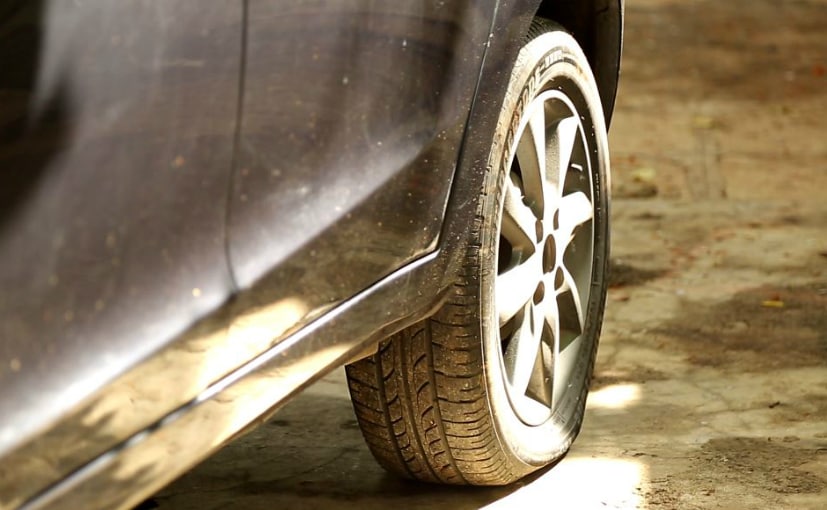
Always keep the tyres inflated at the correct pressure to avoid failure
Tyres are prone to severe wear and tear in the monsoons as they work overtime in wet conditions to give your car all the grip it needs. Do a visual inspection to see if the tyre wear markers are still visible. If there is not enough tread or it has completely worn out, then you need new tyres. Contrary to popular belief, getting only front tyres changed is more dangerous since worn rear tyres might result in oversteer, which can be more dangerous during the monsoon. Also, always keep your spare tyre in good condition and with enough air pressure.
Also Read: What To Do When Your Two-Wheeler Is Submerged In Flood Water
3. Keep it Clean
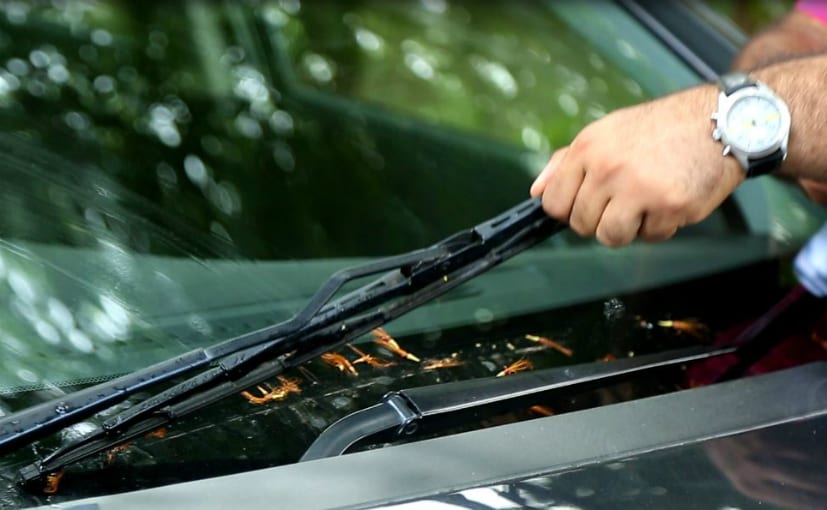
Don't let dirt or muck settle on the exterior of the car, as over time it could not just damage the paint, but also lead to rusting
The simplest way to protect your car is to keep it clean. Don't let dirt or muck settle on the exterior of the car, as over time it could not just damage the paint, but also lead to rusting. Wipe down or wash off all the gunk from your car's body post driving in the rain. Having said that, if you plan to keep your car parked for long in the open, don't use a car cover. The cover tends to stick to the car's body, and once it dries in the sun, the cover can stick to the car's clear coat and can peel it off while removing it, causing more damage.
4. Maintain Cabin Hygiene
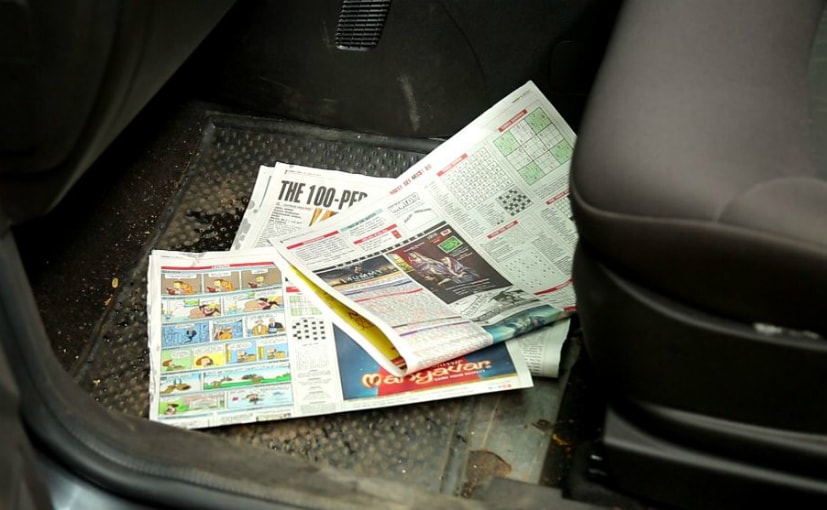
Use newspapers to soak up the water inside your car
During monsoon, it's very important to keep the car's interior clean and dry. Wet and muddy shoes, wet clothes will lead to high levels of moisture and leaving a bad odour. Spread old newspaper on the floor to keep the water and muck off the carpets and carry a fresh towel in the car to dry yourself or drape it on the seat to keep it dry. Also, remember to get your AC serviced. The AC filter will be working overtime to reduce the moisture and all the wet grime particles that enter your car.
5. Park It Safely

Find a safe high-lying area to park your car, especially if you live in a location that is prone to flooding
During monsoon, it's important that you park your car in a safe spot. While a dry, covered parking would be ideal, if like most of us you don't have access to one then try and find a safe high-lying area, especially if you live in a location that is prone to flooding. However, avoid parking below trees as in addition to all the random leaves, twigs and bird droppings, there is also the possibility of a branch or the entire tree falling on the vehicle during thunderstorms.
Latest News
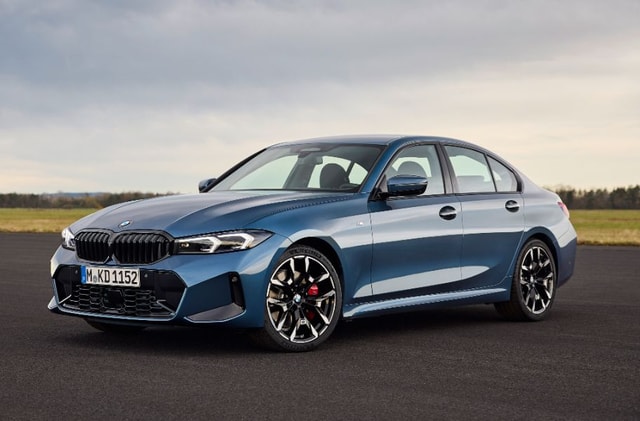 Jaiveer Mehra | Jan 8, 2026Auto Sales 2025: BMW Group India Sold 18,001 Cars And SUVs, Its Highest Ever Yearly FigureCarmaker delivered 17,271 units under the BMW brand and 730 units under Mini.1 min read
Jaiveer Mehra | Jan 8, 2026Auto Sales 2025: BMW Group India Sold 18,001 Cars And SUVs, Its Highest Ever Yearly FigureCarmaker delivered 17,271 units under the BMW brand and 730 units under Mini.1 min read car&bike Team | Jan 8, 2026Suzuki Motorcycle India Achieves 10 Million Production MilestoneThe 10 millionth unit was an Access 125 scooter, which rolled out from Suzuki’s Gurugram plant.1 min read
car&bike Team | Jan 8, 2026Suzuki Motorcycle India Achieves 10 Million Production MilestoneThe 10 millionth unit was an Access 125 scooter, which rolled out from Suzuki’s Gurugram plant.1 min read Jaiveer Mehra | Jan 8, 2026Tata Safari Petrol vs Mahindra XUV 7XO : Specs, Features ComparedTata has finally introduced a petrol engine option on the Safari for the 2026 model year, but how does it compare to the popular Mahindra XUV 7XO?1 min read
Jaiveer Mehra | Jan 8, 2026Tata Safari Petrol vs Mahindra XUV 7XO : Specs, Features ComparedTata has finally introduced a petrol engine option on the Safari for the 2026 model year, but how does it compare to the popular Mahindra XUV 7XO?1 min read car&bike Team | Jan 8, 20262026 World Car Awards Finalists AnnouncedThe winners of the awards will be announced on April 1 at the 2026 New York Auto Show.1 min read
car&bike Team | Jan 8, 20262026 World Car Awards Finalists AnnouncedThe winners of the awards will be announced on April 1 at the 2026 New York Auto Show.1 min read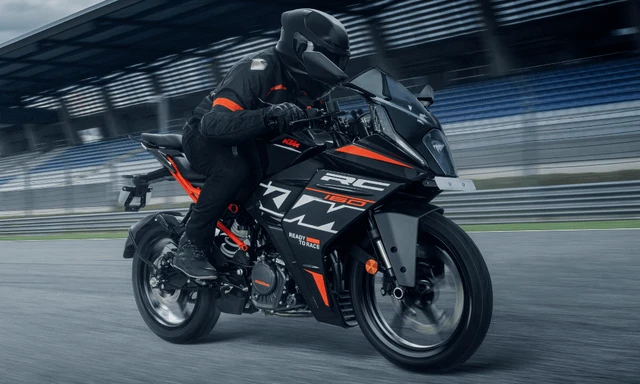 car&bike Team | Jan 8, 2026KTM RC 160 Launched In India At Rs 1.85 LakhThe RC 160 serves as the entry point in KTM India's supersport range.2 mins read
car&bike Team | Jan 8, 2026KTM RC 160 Launched In India At Rs 1.85 LakhThe RC 160 serves as the entry point in KTM India's supersport range.2 mins read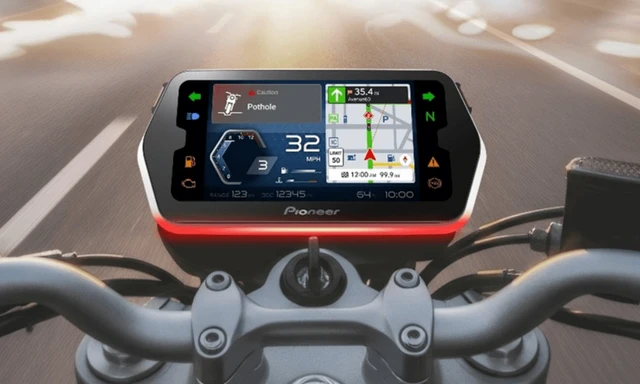 car&bike Team | Jan 8, 2026Pioneer Ride Connect To Debut As Phone-First Motorcycle Dashboard PlatformPioneer Ride Connect previews a future where motorcycle dashboards rely on smartphones, cloud navigation and voice control instead of standalone hardware.1 min read
car&bike Team | Jan 8, 2026Pioneer Ride Connect To Debut As Phone-First Motorcycle Dashboard PlatformPioneer Ride Connect previews a future where motorcycle dashboards rely on smartphones, cloud navigation and voice control instead of standalone hardware.1 min read
 Bilal Firfiray | Jan 9, 2026Toyota Urban Cruiser Hyryder: 10,000 km Long-Term ReviewAfter spending over three months and 10,000 km with the Toyota Urban Cruiser Hyryder Hybrid, we were impressed by its real-world mileage, seamless hybrid, practical comfort, and Toyota reliability. Is it the best C-SUV then?5 mins read
Bilal Firfiray | Jan 9, 2026Toyota Urban Cruiser Hyryder: 10,000 km Long-Term ReviewAfter spending over three months and 10,000 km with the Toyota Urban Cruiser Hyryder Hybrid, we were impressed by its real-world mileage, seamless hybrid, practical comfort, and Toyota reliability. Is it the best C-SUV then?5 mins read Seshan Vijayraghvan | Jan 8, 20262026 Mahindra XUV 7XO Review: Big On Tech, Bigger On ComfortThe new Mahindra XUV 7XO is flashier, feature packed, and comes with more advanced tech. But are the changes just incremental or actually substantial?1 min read
Seshan Vijayraghvan | Jan 8, 20262026 Mahindra XUV 7XO Review: Big On Tech, Bigger On ComfortThe new Mahindra XUV 7XO is flashier, feature packed, and comes with more advanced tech. But are the changes just incremental or actually substantial?1 min read Amaan Ahmed | Jan 3, 2026VLF Mobster 135 300 KM Review: Fun But FlawedA 125 cc scooter with Italian design and Chinese genes is a rare combination, and while some may be tempted to dismiss it because of its origins, the VLF Mobster shows 125s can also be exciting – but not without compromises.11 mins read
Amaan Ahmed | Jan 3, 2026VLF Mobster 135 300 KM Review: Fun But FlawedA 125 cc scooter with Italian design and Chinese genes is a rare combination, and while some may be tempted to dismiss it because of its origins, the VLF Mobster shows 125s can also be exciting – but not without compromises.11 mins read Preetam Bora | Dec 30, 2025TVS Orbiter Review: Real-World Performance and Range TestedThe TVS Orbiter is a promising electric scooter promising decent range, practicality and pricing. But is there any reason to avoid it? We spent a few days getting to know it better.9 mins read
Preetam Bora | Dec 30, 2025TVS Orbiter Review: Real-World Performance and Range TestedThe TVS Orbiter is a promising electric scooter promising decent range, practicality and pricing. But is there any reason to avoid it? We spent a few days getting to know it better.9 mins read Jafar Rizvi | Dec 24, 2025MG Windsor EV 38 kWh Long-Term Report: IntroductionThe Windsor EV has joined our garage, and before it settles into daily duty, I took it out to get a sense of what living with an electric car is like.4 mins read
Jafar Rizvi | Dec 24, 2025MG Windsor EV 38 kWh Long-Term Report: IntroductionThe Windsor EV has joined our garage, and before it settles into daily duty, I took it out to get a sense of what living with an electric car is like.4 mins read






















































































































